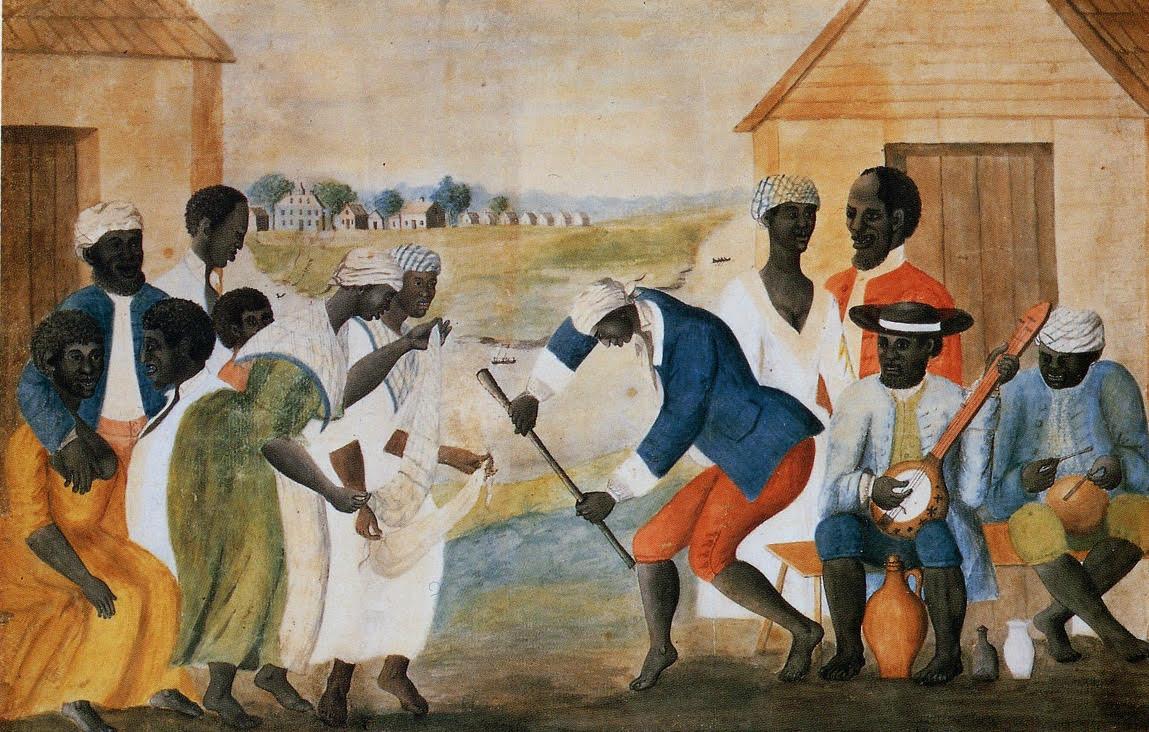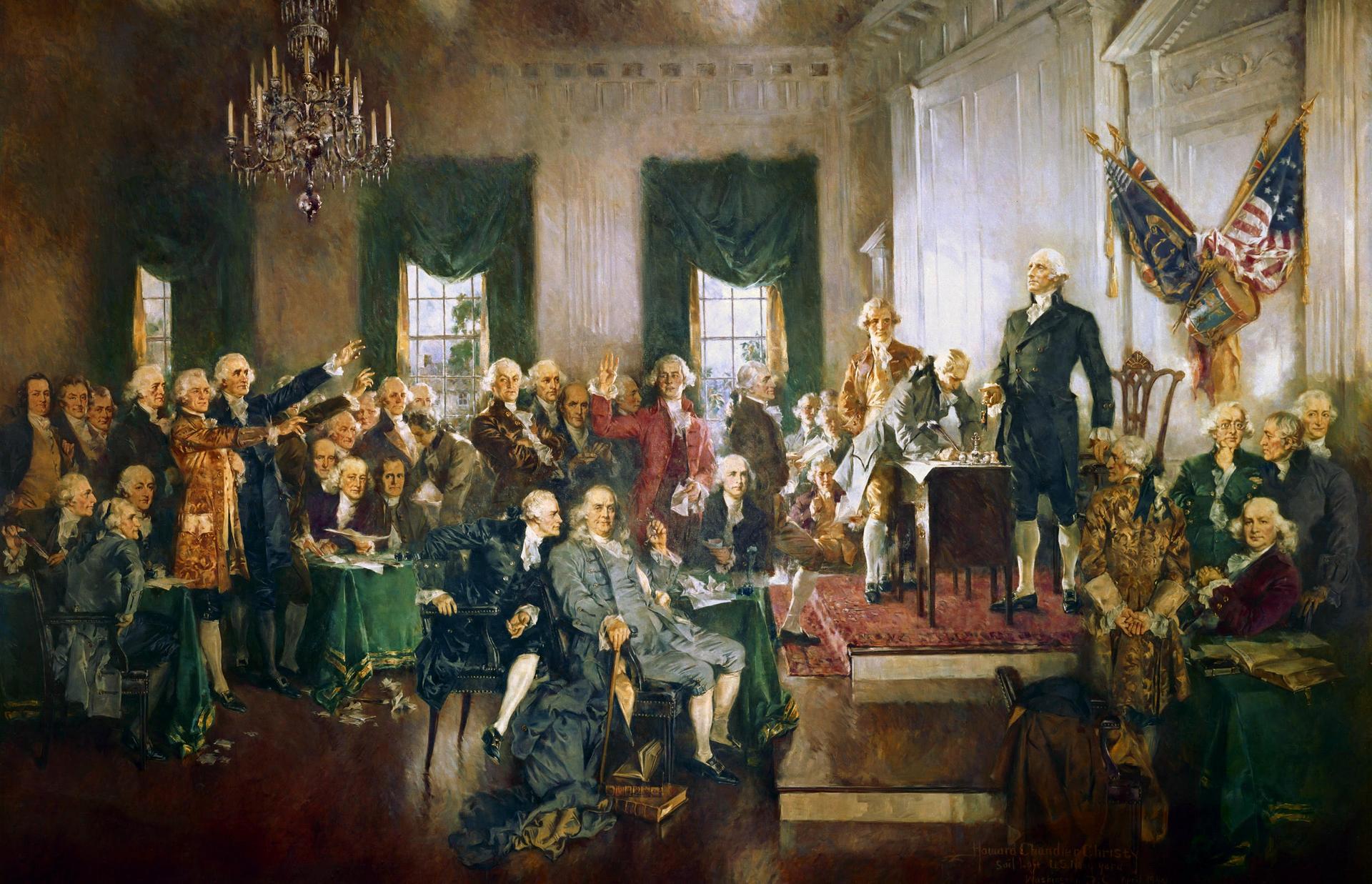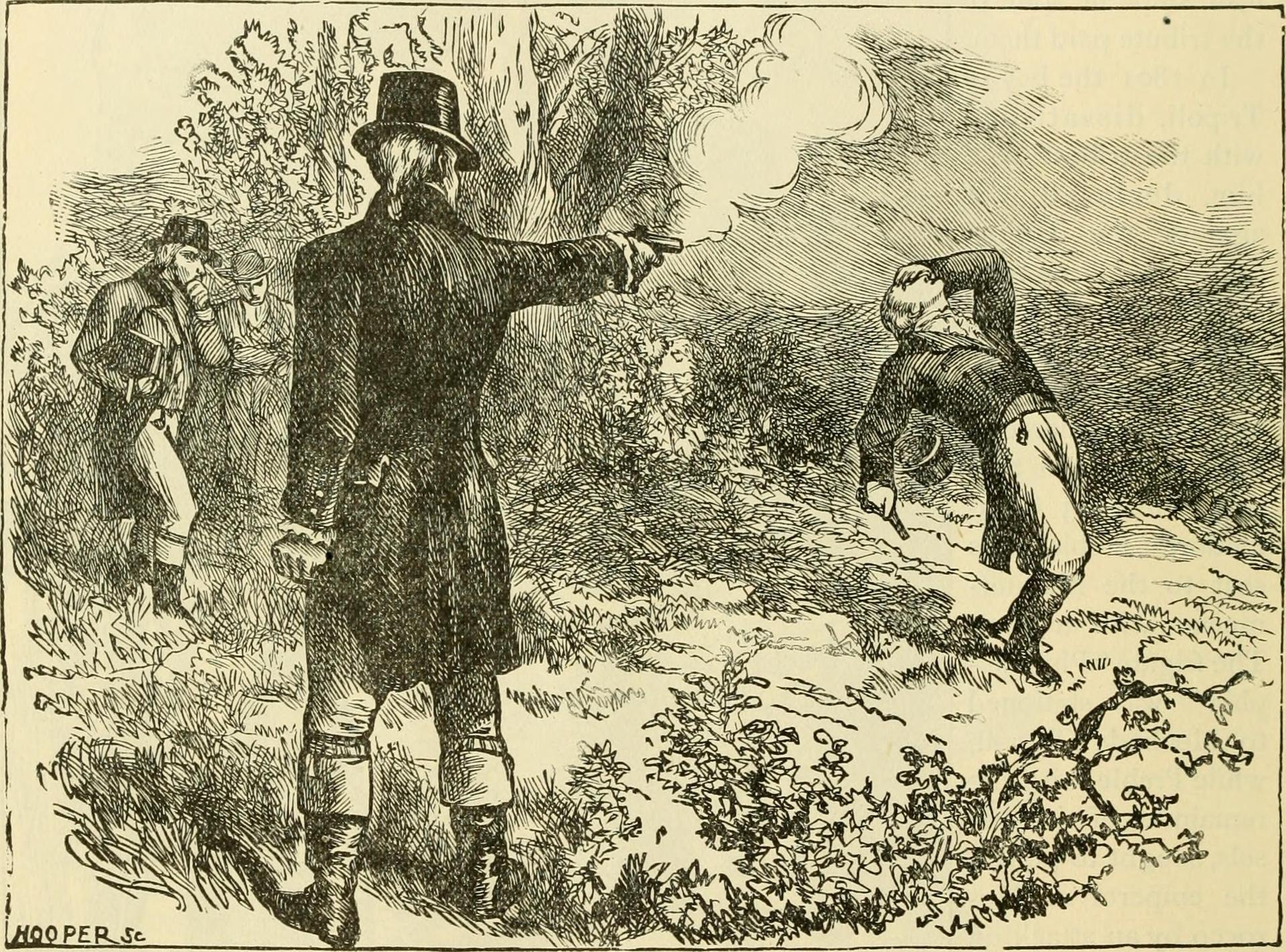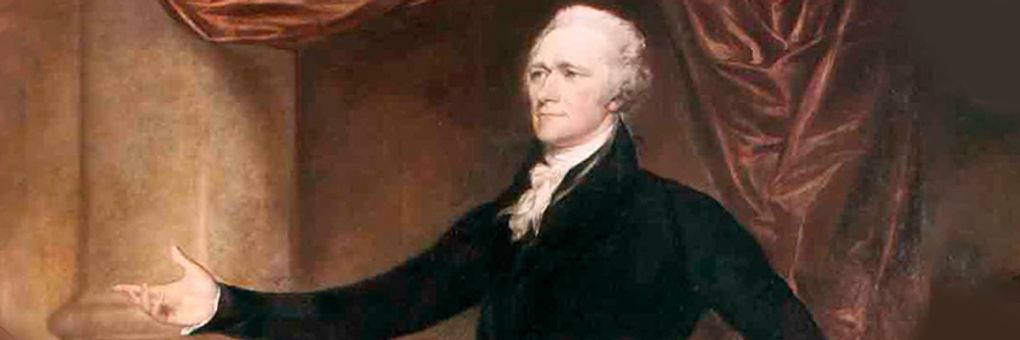Slavery played a powerful role in the American colonial economy, and yet the practice was deeply polarizing. Opponents were active as far back as the early 17th century. Among the Founding Fathers of the Revolutionary era, Alexander Hamilton took a leading role in the antislavery movement. But what was his role, really? Establishing a Constitution among the 13 former colonies took a lot of pragmatic finessing of the deep-seated differences already apparent early in the nation’s history.
◊
Those of you who have had the good fortune of seeing Lin-Manuel Miranda’s celebrated stage musical Hamilton may remember the scene in which Alexander Hamilton engaged in a bitter argument about the ethics of slavery with rival Thomas Jefferson, and Hamilton delivering a memorable riposte, saying, “Hey neighbor, your debts are paid because you don’t pay for labor!”
This confrontation (whether, in fact, it actually ever happened) highlights a fundamental tension in the founding of the United States. This tension was so profound it took only “four score and seven years” until the Civil War tore the young nation into two opposing factions – and echoes of that rupture survive, sadly, to our present day. The role of slavery in a “free” nation was the cause of this wrenching volatility within the body politic.
Hamilton is portrayed in the musical Hamilton as a fiery opponent of the practice of slavery, but is this the full story? In actuality, he did oppose slavery and held no slaves himself. On the other hand, like the country he so dearly loved and helped bring into existence, he was profoundly conflicted. And in the end, he compromised his ideals in order to help put the “united” into the United States.
Slavery in the New World
At the core of the new nation’s self-image were the shared ideals of liberty and equality – that, in slave-owner Thomas Jefferson’s memorable phrase, “all men are created equal.” And yet, tightly entwined with these ideals were the concepts of both private property rights and limited government. Slavery, the practice of humans owning other humans as an exploitable asset of unpaid labor, was both prized and condemned. It’s not an overstatement to say that the early agrarian economy of the South could not have developed without the labor of slaves contributing – and embodying – wealth to the young nation. In fact, they were both labor and assets.
Founding Fathers Benjamin Franklin of Pennsylvania and New York’s John Jay both held slaves, yet they also presided over state-based antislavery groups. And Alexander Hamilton, who was not a slave-owner, joined with John Jay to promote an antislavery ideal within his adopted home state – even if the goal was to be achieved gradually over time.
Approximately twice as many of America’s Founding Fathers were slave-owners than were not. Well-known figures such as George Washington and Thomas Jefferson, both of Virginia, owned slaves. So did John Hancock, Benjamin Franklin, James Madison, Patrick Henry, and John Jay. Founding Fathers who did not own slaves included John Adams and Samuel Adams, both of Massachusetts, as well as Thomas Paine and, as viewers of Hamilton will certainly know, Alexander Hamilton of New York.
What Did Alexander Hamilton Think About Slavery?
Alexander Hamilton was born amid the sugar-cane plantations of the Caribbean island of Nevis, at the time a British-held slave colony. Born out of wedlock to a French-British mother and a Scottish father who soon abandoned the family, young Alexander was raised and educated due to the kindness of others. When he was still very young, his mother moved his brother and him to the larger island of St. Croix, where Alexander’s precocious intelligence and personal ambition endeared him to a small group of influential merchants and businessmen.

Slaves in the Colonial Era dancing on a South Carolina plantation. "The Old Plantation," c. 1790.
(Source: Wikipedia)
St. Croix was a key island to the international slave trade, and slaves there outnumbered European immigrants and plantation owners by a factor of 12 to 1. Hamilton spent most of his youth there. By the age of 14, he was a prized member of the import/export firm of Beekman and Cruger and was exposed to the realities of purchasing as well as selling African slaves. Indeed, one of his job responsibilities was evidently to oil the skin of slaves who were to go up for auction, “in order to make them look sleek and handsome.”
Growing up on an island enmeshed so fully in slavery and the slave trade had an impact on young Alexander, one that he carried with him throughout his life. He desired to “excite the indignation of every friend to humanity” on the inhumane practices of slavery, which he believed were not only physically harmful to slaves but morally harmful to slaveholders.
However, as we’ll see, being antislavery was only one of several priorities that sometimes competed for Hamilton’s attention – and action.
Hamilton Pushes Ahead in the New World
Hamilton was accepted to King’s College (now Columbia University) in New York in 1773, at the age of 16. He was a young man in a hurry, and he lost no time in getting involved with the politics of the tumultuous age. He jumped into action at the beginning of the Revolutionary War, leaving his studies and volunteering with the Continental Army, eventually becoming an aide-de-camp to George Washington. Following the war, the clearly impressed first U.S. president added Hamilton to his Cabinet, in which he served as Secretary of the Treasury from 1789 to 1795.
Hamilton was a man with strong opinions, a skilled debater who was even viewed as an “attack dog” by his chief rival, Thomas Jefferson. However, his opposition to slavery was at times subject to an inner philosophical discord. Hamilton was in thrall to several ideas about government that weren’t easily congruent with his antislavery views. In addition to opposing slavery, he also held the belief that property rights were of supreme import – even when the property included human beings imported from Africa!
The emphasis on property rights was consistent with Hamilton’s belief that owners of land and property should be free of excessive taxation and other limits on their rights. Breaking with the customs of the hierarchically structured British society, he was also friendly to the idea that citizens should be at liberty to build businesses through innovation. And in support of that position, he advocated strong national institutions such as the establishment of a national banking system.
Hamilton was as opposed to the rule of King George III of England as anyone, but he was often accused by his opponents of being a secret monarchist. There’s some truth to this: He praised the British constitutional monarchy as “the most perfect government which ever existed.” And he advocated lifetime appointments for the American president and senators, an idea quite at odds with most former colonists.
Did Hamilton Support Slavery and Participate in the Slave Trade?
Despite being a supporter of antislavery ideals, Alexander Hamilton was immersed through most of his life in the slave trade, executing or managing slave purchases. We have seen that, as a precocious lad in St. Croix, he helped his employer and future benefactor in the conduct of his business, including the purchase and sale of slaves in “lots,” as was the custom in the auction trade.
As an adult and professional man of the law in New York, Hamilton assisted his wife, Elizabeth Schuyler Hamilton, and other members of the Schuyler family, with their own slave trades. Though his wife owned no slaves after her marriage to Hamilton, she and her family held slaves and relied on Hamilton to execute trades and transfers of their property – including men, women, and children.

Scene at the signing of the Constitution of the United States, 1787.
(Painting by Chandler Christy, via Wikimedia)
It can’t really be said that Hamilton had a “fire in his belly” to abolish slavery, despite his professed beliefs; the truth is, in fact, more conflicted. Hamilton participated in the institution as it affected his personal and professional life. In this, he was much like others who may have felt the same yet were citizens of a developing country dependent on slavery as part of its foundation.
Hamilton Supports a “Gradual” Plan to Rid the States of Slavery
Like many of his fellow Founding Fathers, particularly those in northern states, Hamilton was uneasy with the institution of slavery – whether the slaves worked the fields of plantations or served masters in their homes. And like both Benjamin Franklin and John Jay, northerners who owned slaves, he sought a way to limit the growth of slavery, gradually reducing its reach and eventually eliminating it altogether.
Franklin was a member of the Pennsylvania Society for Promoting the Abolition of Slavery, and John Jay founded, with Hamilton’s support, the New York Manumission Society. (Manumission is an archaic term referring to the release of slaves from bondage.) In their thinking, a two-pronged approach was desirable. Working within states where the majority of slaves were not fieldworkers, these groups sought first to eliminate the trading of slaves and, later, to gradually promote the release of slaves into free society.
Not everyone in the early days of the Republic was comfortable with the idea of allowing freed slaves to become U.S. citizens. A large faction of 18th century thinkers were called colonialists; they believed that all former slaves should be removed from the states and forcibly resettled somewhere else.
None of this talk would do for the southern plantation states, where hundreds of thousands of slaves toiled for their masters in the cultivation of cash crops, and where the institution was deeply rooted in the culture and society of the times.
Hamilton was keenly aware of this, and he worked closely in the creation of the American Constitution with slave-owners, prime among them George Washington, James Madison, and Thomas Jefferson. Above even the injustice of slavery, as he saw it, was the importance of setting up a sovereign nation that was solid enough to withstand attacks from both without and within.
Hamilton undertook key roles in writing and ratifying the Constitution of the United States, a massive undertaking that took place throughout 1787 and was finally signed by the 13th state, Rhode Island, in 1790. Knowing that the southern colonies formed a pro-slavery bloc that could wreck the plans for the nascent nation, Hamilton subsumed his motivating desire for a slavery-free country and sought common ground between the North and South.
The Three-Fifths Compromise
Taxation and representation were two areas where North and South were of one mind. And yet, as these themes related to the existence of slaves, there was a split. Southerners did not want to be responsible for paying taxes on their slaves as they did on their other assets; northerners believed each slave should be fully taxed as property. On the other hand, southerners wanted each slave counted toward the census, giving them more representation in the government; northerners, quite logically (per their self-interest), felt that only free men should be counted for the purpose of the census.
The split needed to be resolved. And so it was. One representative to the Constitutional Convention, James Wilson of Pennsylvania, proposed that each slave should be counted as three-fifths of a person. This reduced taxation for the southern contingent, and yet also reduced census representation, satisfying the northerners. This key compromise, tenuous, fraught, and morally abhorrent as it was, allowed both factions to save face and eased the way for the adoption of the Constitution and the formation of the independent government of the states.
Fewer than 100 years later, the Three-Fifths Compromise and the Supreme Court’s Dred Scott decision of 1857 set the stage for the Civil War. America’s lasting heritage was later set down by the Emancipation Proclamation of 1863 and the 13th Amendment to the U.S. Constitution, ratified in 1865.

Artist interpretation of the 1804 duel between Aaron Burr and Alexander Hamilton. (Source: Wikipedia)
American Democracy: The Fissures that Remain
Hamilton, a pragmatist at heart, got the thing he desired more than anything – freedom and stability for his new country. But this freedom was profoundly incoherent and not terribly stable; it was built on a foundation of enslaved masses of people. Though he got what he wished for, it was truly an imperfect union. The goal of a gradual weaning away from the economic support of slavery simply did not happen. Instead, the North and South could not keep their hatchets buried forever. The Civil War is the true legacy of the three-fifths compromise.
Just as the constitutional compromise wasn’t perfect, emancipation resulted in its own stresses on American society. These stresses are apparent still, and they underlie the troubled system of relationships within the great compromises that make up contemporary life in the United States. While history shows that Alexander Hamilton (eventually) got his way on abolishing slavery, the compromises he helped put into effect in order to shore up the early United States created fissures that still run through the bedrock on which America was founded.
Ω
Kevin Martin is Senior Writer for MagellanTV. He writes on a wide variety of topics, including outer space, the fine arts, and modern history. He has had a long career as a journalist and communications specialist with both nonprofit and for-profit organizations. He resides in Glendale, California.
Portrait of Alexander Hamilton (detail) by John Trumbull, 1805 (Source: Wikimedia Commons)

